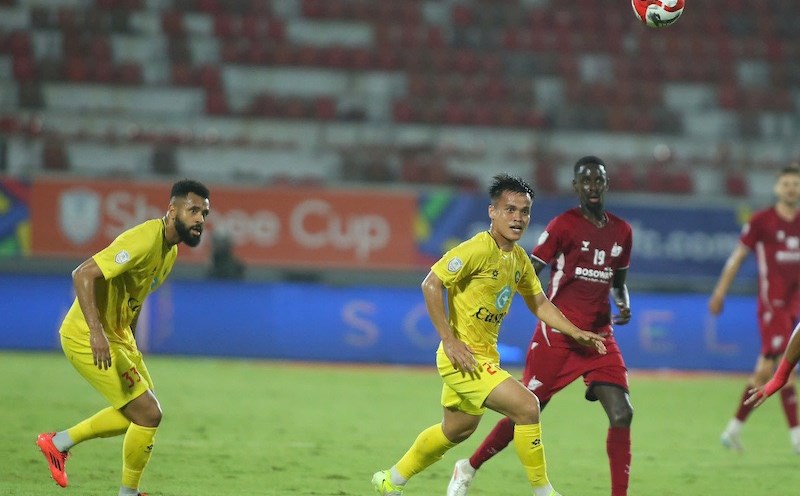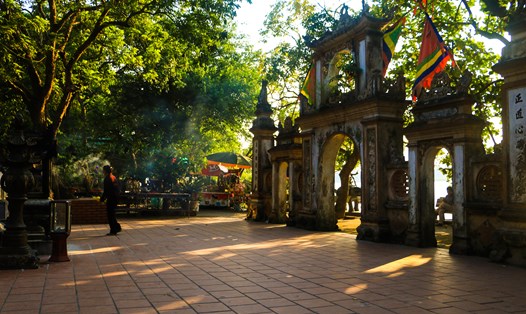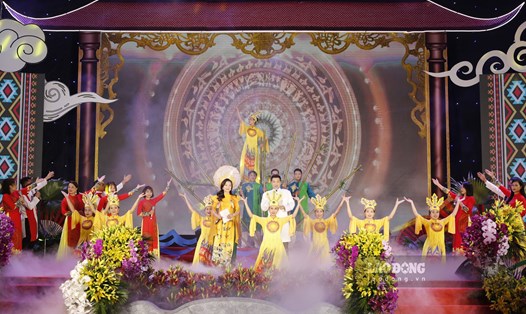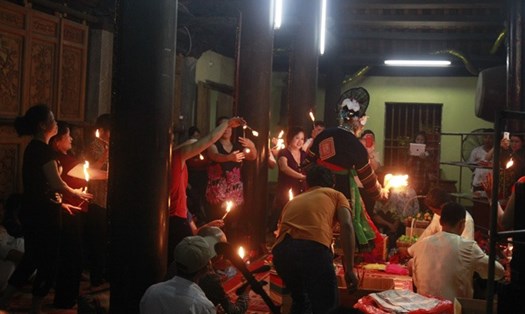The guardian gods of the sacred realm
The two snake gods, known as the Two Snake Gods, including Thanh Xa Dai Tuong Quan and Bach Xa Dai Tuong Quan (also known as Ong Lot), play an important role in the system of the Four Palaces. Thanh Xa Dai Tuong Quan, with its green color, symbolizes the growth, development and strong vitality of nature. Bach Xa Dai Tuong Quan, with its pure white color, symbolizes nobility, wisdom and spiritual power. These two gods are not only symbols of nature but also generals, responsible for serving the Holy Mother and the Council.
In the temple architecture, the Mother Goddess shrine and Quan Xa Than are arranged in three different ways, showing the flexibility in the spiritual space: Placed together with Quan Ngu Ho under the communal altar; Hanging across the communal altar; Hanging on the beam of the Tu Phu shrine. Usually, it is the green snake on the right and the white snake on the left. This does not reduce the importance of the two gods, but on the contrary, it shows the respect and special role of them in protecting and maintaining the harmony of the spiritual world.
In the concept of Mother Goddess religion, snakes are considered special creatures that have the ability to connect heaven and earth. With the ability to crawl underground and climb high, snakes have both yin and yang qualities, becoming the perfect symbol for the harmony between the two worlds. This reflects the philosophy of balance and harmony in the Vietnamese cosmology. If Quan Ngu Ho represents the mountains and forests, Quan Xa Than is the symbol of the water god of the river. These two gods, in addition to guarding the temple, also guard the underworld and the water world, and have the ability to ward off evil spirits.
In the Mother Goddess worship, there is also a special image of the snake god - Tam Dau Cuu Vi, a snake god with three heads and nine tails. This god is known as the mount of the Great Mandarins such as Quan Lon De Tam and Quan Hoang Ca, and also serves many local Lady Gods such as: Lord Thac Bo, Lord Tay Thien, and Lord Nguyet Ho.
In the spirit medium ritual, the two gods Thanh Xa and Bach Xa descending to the spirit medium is an infrequent phenomenon. When they appear, they perform a typical ritual: lying on the bed, pressing their bellies to the ground and performing a winding movement. They also perform the ritual of bowing to the King and the Holy Mother by moving their heads up and down. After that, the ritual continues with the spraying of wine in four directions to open the light and perform the wine offering ritual by licking the wine plate, before ending the spirit medium session.
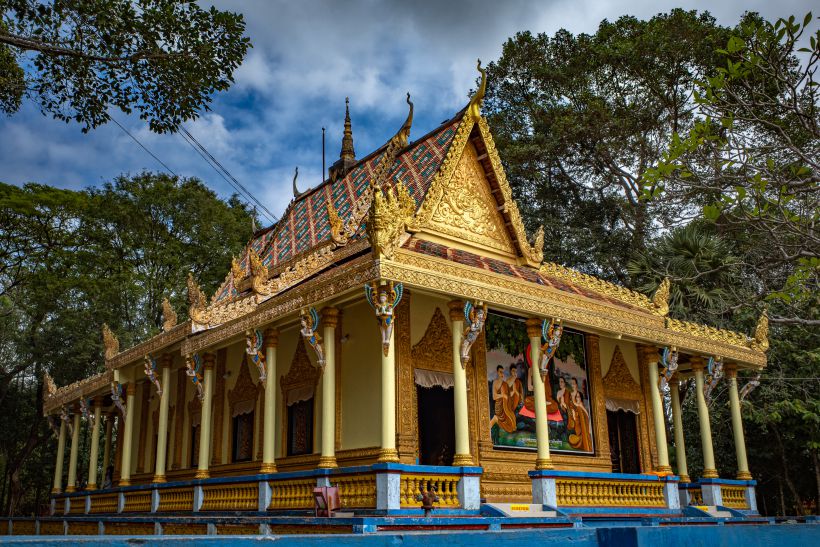
Snake worship in Vietnamese culture
The origin of Ong Lot in the Mother Goddess worship is still a mystery, there is no specific story or legend that clearly explains the appearance of these two gods. Originating from the natural environment associated with river conditions, the image of the snake was soon assimilated with water gods, becoming a part of the Vietnamese folk consciousness and often related to the worship of natural gods.
In Vietnamese culture, snakes are symbols of strength, sacredness and the ability to transform. Snakes can live both on land and in water, symbolizing the connection between two worlds, between yin and yang. In many fairy tales and legends, snakes often appear as guardian gods, those who have the ability to bless and punish. Therefore, worshiping Ong Lot in the Mother Goddess worship is not only a respect for snakes but also a respect for the natural power and sacredness of the spiritual world.
Snake worship is most common in the Northern Delta. Temples dedicated to snake gods often appear along major rivers such as the Red River, Cau River, and Duong River, and are associated with relics and festivals, such as the Linh Dam village festival and the water god Bao Ninh. According to legend, Bao Ninh was originally a dragon god who transformed into a student to learn the way. During a drought, when heaven stopped raining, Bao Ninh made rain to save the drought according to his teacher's instructions, but was later punished by heaven. The people remembered his merit and built a temple to worship him.
Another festival related to snake worship is the Thu Le village festival. According to legends and myths, Linh Lang Dai Vuong was originally a snake god. After helping the country, he transformed into a dragon and slithered down to West Lake. Nhat Tan village festival also bears the mark of snake worship, worshiping Uy Linh Dai Vuong - who is believed to be the eldest of the seven snake gods, and later reincarnated as Prince Uy Do Linh Lang. In addition, the festivals in Yen Noi village (Tu Liem, Hanoi) worshiping Tho Lenh Bach Hac Tam Giang are also typical examples.
Not only limited to the Northern Delta, the custom of snake worship - water god worship also appears in the Central, Central Highlands and Southwest regions. The M'nong people consider snakes as water gods with great power and influence on community life. The Muong people in Thanh Hoa also maintain the custom of snake worship, with the snake god temple in Luong Ngoc village, Cam Luong commune, Cam Thuy district being widely known.
In the Mekong Delta, many folk tales about snakes are still circulating. People both fear and respect snakes, even worshiping them in temples. In Dinh Thuy commune, Mo Cay district, Ben Tre, there is a communal house called Dinh Ran, which preserves the legend of a pair of giant, gentle snakes. Local people believe that the appearance of snakes is a sign of good luck and a bountiful harvest. The legend of Thien Ho Duong in Dong Thap Muoi also mentions an army of snakes helping the hero fight the French.
For the Khmer people in the South, the belief in worshiping the Naga snake god plays an important role. According to the Khmer nation's founding legend, the Naga snake god is the one who controls the water source, bringing favorable weather and rain to the rice-growing residents of Southeast Asia. Naga is also considered the god of rain, helping all things to grow and flourish. The Naga snake god appears in many places in the Khmer pagodas in the South, showing unique decoration, preserving the unique identity of the Khmer ethnic group; preserving and proving the traditional identity of the Khmer spirit and the philosophy of Southern Buddhism.
The image of Quan Xa Than in the Mother Goddess worship is not only a spiritual symbol but also reflects the close relationship between Vietnamese people and nature, especially the world of rivers and water. The existence of this belief through many generations shows the important role of the snake image in the spiritual and cultural life of Vietnamese people.
(Posted on the special edition of Labor Weekend Spring At Ty)





